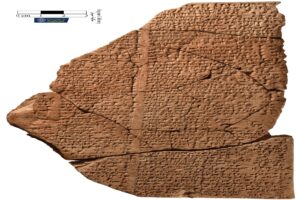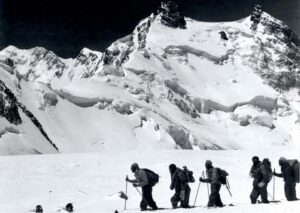If you’re feeling a warm sense of satisfaction over solving today’s Wordle, I’m about to give you an inferiority complex.
A London furniture restorer named Ben Bacon unraveled a long-standing mystery around the meaning of marks found in cave paintings across Europe.
Now that’s how you solve a puzzle.
The marks include a line, a dot and a symbol that looks like the letter Y. They almost always appear next to animals and have confounded researchers since they first came to light in the mid-1800s.

Examples of animal depictions associated with sequences of dots/lines in various cave paintings. Images: Cambridge University Press
That is until hobbyist archeologist Ben Bacon decided to take a crack at it. According to the BBC, Bacon spent hours on the internet and in the British Library pouring over cave paintings and “looking for repeat patterns.”
Eventually, it struck him that the Y figure might be a symbol meaning “to give birth.” From there, it was only a short leap to the idea that the dot and vertical line symbols might denote lunar months.
Londoner solves 20,000-year Ice Age drawings mystery https://t.co/CvDusYNK81
— BBC News (World) (@BBCWorld) January 5, 2023
Bacon took his theories to professors from Durham University and University College London. They decided to listen to this “person off the street,” one of the researchers told the BBC.
Together, they worked out the birth cycles of present-day animals most similar to the ones scrawled across Europe’s cave walls. Their findings confirmed Bacon’s theories — as much as the meaning of any 20,000-year-old writing system can be confirmed.

Examples of the “Y” sign in sequences associated with animal depictions in various cave paintings. Images: Cambridge University Press
“The position of the “Y” within a sequence of marks denotes month of parturition, an ordinal representation of number in contrast to the cardinal representation used in tallies,” Bacon and the scientists wrote in their paper An Upper Palaeolithic Proto-writing System and Phenological Calendar.
“Our data indicate that the purpose of this system of associating animals with calendar information was to record and convey seasonal behavioral information,” they wrote.
Separated by millennia, closer than you think
The markings represent the first-known use of a calendar system.
“The results show that Ice Age hunter-gatherers were the first to use a systemic calendar and marks to record information about major ecological events within that calendar,” Paul Pettitt, a Professor at Durham University and co-author of the paper, said.
“In turn, we’re able to show that these people, who left a legacy of spectacular art in the caves of Lascaux [in France] and Altamira [in Spain], also left a record of early timekeeping that would eventually become commonplace among our species,” he went on.
For Bacon, the theory fosters a connection to humans usually rendered almost unknowable by the mists of time.
“These people, separated from us by many millennia, are suddenly a lot closer,” he said.






